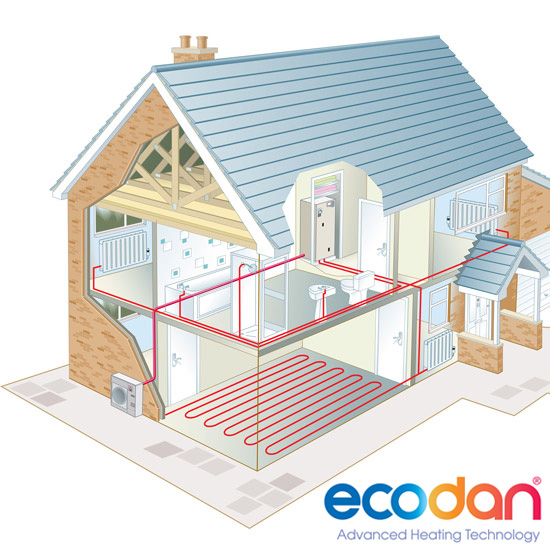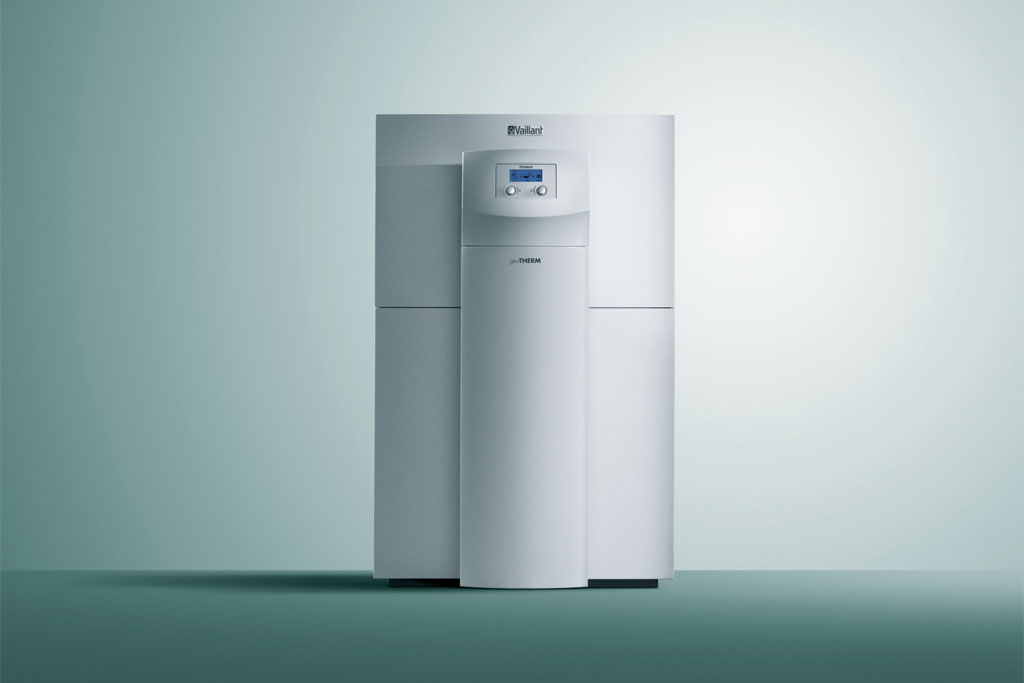General Questions
- Flow
- Return
Ground source heat pumps save you money they run on clean electricity and a correctly designed installation will provide your heating and hot water for less than with oil or gas. The high efficiency of a ground source heat pump also means a significant saving on carbon emissions, a heat pump will produce much less CO2e than an ordinary boiler because it uses less energy to create the heat.
A ground source heat pump will save money on your fuel bills, how much money you will save depends on what fuel you are currently using and how well the system is designed. The efficiency of the system changes as the temperature of the collected (incoming) heat changes and the temperature of the heat output changes.
A ground source heat pump runs best with a source temperature above 4˚ and an output temperature less than or equal to 35˚C. At these sort of temperatures it is able to provide up to 6 kWh of heat for one kWh of electricity which means the savings can be significant running a ground source heat pump.
- Save Money
- Cut CO2
- Annoy the energy companies with your cheaper bills!
With a ground source heat pump the heat is absorbed in the collecting circuit from the water in the ground loop each time it goes through the heat pump. The heat taken from the water during its passage through the heat pump is replaced by absorption from the ground surrounding the pipes. This ground in turn is warmed up again by transferring heat from the area all around and below. This heat originally comes from the warmth of the sun, to get any significant heat from the centre of the earth the pipes would have to go much deeper in the ground. A ground source heat pump is still often referred to as a geothermal heat pump.
Other Questions

The trouble with pricing these things is its difficult to get a decent average cost, I can say clearly its not cheap. Dont let that put you off because the government boiler replacement scheme is aimed at subsidising the extra cost of having this stuff installed! The efficiency of the system depends on the temperature we need to run it at to give you the temperature you need in the house so we would probably need to upgrade the radiators. So you can see its difficult to price it up, if you have had an EPC done recently just let us have your postcode and house number and I can give you a better “ball park” figure.
- Higher cost to install, but BUS makes it cheaper
- Greater space needed to make trenches but boreholes could counter this
- 50% cheaper heating bills for life.

So that you can compare the efficiency of different heat pumps, the manufacturers state the energy performance of their heat pumps at fixed temperatures for the input (source) temperature and the output (flow) temperature. Test are carried out in controlled conditions to EU standards to make sure the products can be fairly ranked. For ground source heat pumps this is usually at a source temperature of 0˚C and an output temperature of 35˚C this is shown as B0/W35 which stands for Brine 0˚C water 35˚C, the water in the under ground pipes is described as Brine as it contains Antifreeze to stop it freezing inside the heat pump where temperatures can get pretty low. The amount of heat produced is divided by the amount of electricity used to produce the heat and the answer is called the Coefficient of Performance and is abbreviated to COP.
SPF
The COP figure is only valid at the temperatures quoted; it’s a snapshot of the performance. During the course of the heating season the temperature of the water in the ground loop slowly decreases, it starts off at say 10˚C at the start of the season and ends up at say 1˚C or 2˚C at the end of the season. These changes in temperature affect the efficiency of the system and the results of these changes are expressed as the Seasonal Performance Factor which is abbreviated to SPF. The SPF is an estimate of the average COP over the course of the season.
Contact
- 1 Sherring Close, Bracknell, Berkshire, RG42 2LD
- info@heatcollector.co.uk
- 01344 380040
- http://www.heatcollector.co.uk
Who we are
Heat Collector are here to help you with the design, installation and maintenance of ground source & air source heat pump systems
- Design
- Installation
- Maintenance
- MCS accredited
- RHI assistance

